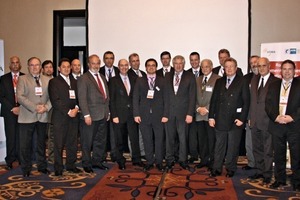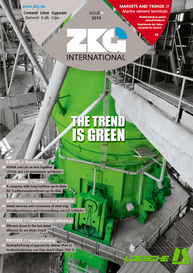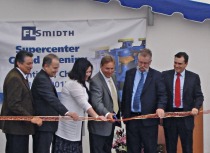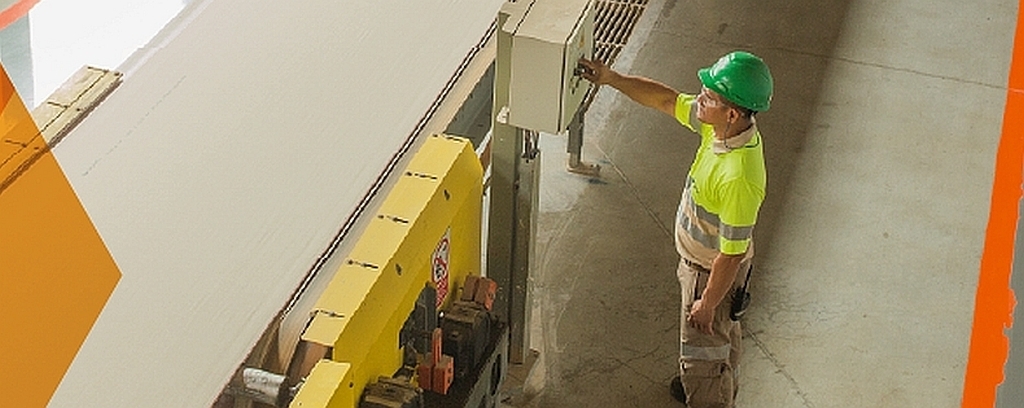VDMA and LAI on tour together
Peru
“The Peruvian cement industry has an extraordinary interest in quality and innovation”, stated Gonzales de la Cotera, Chairman of the country’s cement association. “We need investments in order to further improve our industry.” This comment was made against the background of a 12 % increase in the output of the Peruvian cement industry in 2012. Indeed, the 1st quarter year of 2013 showed an increase of 13 %.
The Peruvian construction industry association also views the future positively. As the country was not badly affected by the financial crisis, there are good growth prospects. The cost structure is also favourable. “Our mines have considerably lower production costs than our neighbours, and we would therefore not be so hard hit by a fall in prices”, said Schmidt.
The positively thinking audience listened attentively as the head of the VDMA delegation, Lothar Jungemann, described the capabilities and quality of German cement plant engineering companies and equipment suppliers. “Especially as regards energy efficiency and conservation of resources, German companies lead the field in many sectors”, he informed them.
The good overall mood was clearly tangible in the Roadshow. Many of the discussions between German representatives of the VDMA member companies and the Peruvian attendees revolved more around future projects than economic problems.
The German supply industry finds good and reliable partners in Peru. It is a stable country and is enjoying an economic upswing. It seems as if Germany has rather neglected this part of the world. Before Asian companies also conquer this market, German companies should intensify their good and historical contacts and again pay more attention to Peru and to South America in general. If German companies want to achieve success in this region, it is essential for them to visit and inform their potential customers personally.
With 100 participants, the mining symposium in Lima was also excellently attended. Association Chairman Romulo Mucho opened the symposium with an overview of the situation of mining companies in Peru. In the course of this, he particularly mentioned the difficulties being faced. These very largely stem from the uncertainty caused by social problems in some regions of the country. The civil disturbances that quite often occur are largely the consequence of decades of mismanagement and the exploitation of people and the environment. Despite all the available good will, also on the part of the government, no short-term solution for the problems is in sight. Indeed, they are even being exacerbated by uncertainties regarding the application of new social and environmental laws.
Nevertheless, mining production and investments are showing a positive development. The export figure of 14.8 billion tonnes is a new record for the country. Of the overall investment total of 8 billion US dollars per year, 46 % are put into the exploration of new deposits. Industry experts believe that only 8 % of Peru’s mineral resources are currently known. By 2016, it is planned that US$ 20.7 bn. will be invested in seven mining operations, and that the production of pure copper will be increased to 1,502,000 tonnes. In addition, six new mines will be opened up by 2018 for the extraction of copper, silver, potassium and iron ore.
Altogether, the figures presented by the Peruvians are most impressive, and everybody concerned is aware that this encouraging development is chiefly attributable to the application of state-of-the-art technology and machines.
Against this background, the visit by the seven specialist companies from Germany was most welcome, as they brought information about ultramodern technology. It was clear to all participants that the development of modern mechanical equipment and new process technologies is only possible if scientifically-based concepts are available. They were therefore extremely interested in the lecture by Prof. Dr. Holger Lieberwirth of the Freiberg University of Mining and Technology, in which he presented the capabilities of modern processing technology for raw materials and for recycled materials.
Chile
Prior to the symposium, a meeting took place in the German Embassy in Santiago de Chile during which Dr. Annette Weerth, head of the embassy’s economic department, briefed the German delegation. “Chile’s economy is the sixth strongest in South America, with a gross domestic product of US$ 268 bn.”, she informed us. “A handful of major companies significantly influence the development of the country. One third of the GDP is based on exports”, she added. Ms. Weerth told us that Chile’s strongest commercial partners are China and the USA. Germany ranks fifth. Chile is the country with the most free trade agreements with other countries, and besides this market openness is characterized by a high degree of legal certainty and good creditworthiness.
“The country’s rate of annual growth is 4.5 %, a figure which should remain stable in the coming years”, the head of the economic department continued. The present rate of unemployment is 6.4 %. As a consequence of the strong growth of the last 20 years, not all sectors of the country’s infrastructure have been able to keep pace with the changes, so that it will be necessary to construct new harbours and airports and to implement a restructuring plan in the coming years.
In the later discussions, the delegation learnt that the country of 17 million inhabitants not only possesses one third of the world’s copper reserves in the form of high-grade deposits, but also has considerable deposits of lithium, silver, rhodium and other rare minerals. 67 % of the mining industry, the motor of the Chilean economy, is in private ownership. State-owned and private companies have the stated aim of investing approx. US$ 60 bn. by 2020 in order to modernize the mining equipment and open up new deposits. Naturally, the desired result will only be achieved if the production processes are also modernized.
All those responsible in Chile are fully aware of the necessity for innovation. It is therefore hardly surprising that the Chilean government is doing everything in its power to improve the education system and to impart new momentum into the field of research and development. Our Chilean interlocutors repeatedly emphasized their interest in cooperation with German universities and companies, especially on the field of research and development. They described Chile as the ideal springboard market for medium-sized German companies, as the market is “small but excellent”.
The German Ministry of Economics and Technology (Bundesministerium für Wirtschaft und Technol-ogie (BMWi)) takes a similar view. Together with Chile’s chamber of foreign trade, the BMWi has created an Internet platform under //www.rohstoffzentrum.cl" target="_blank" >www.rohstoffzentrum.cl:www.rohstoffzentrum.cl in order to facilitate and improve access by German companies to sources of information concerning Chile’s commodities. Contacts between the two countries will certainly also be further improved by the recently signed agreement on the intensification of cooperation on the commodities sector.
Brazil
At the Mining Symposium in Belo Horizonte, more than 100 mining industry specialists attentively followed the presentations of the German experts on the subjects of process efficiency, conservation of resources and reduction of power consumption. In the numerous and intensive technical discussions it became evident time and again that the boom triggered by the global hunger for commodities, particularly that of China, had also left its mark on Brazil. Many mines had doubled or tripled their capacity in the last five years. In the area of Belo Horizonte the rate of unemployment is 6 %, and because of the lack of qualified specialist personnel it is almost impossible for companies to achieve further increases in production. For this reason, the attendees expressed great interest in the German dual system of training.
Among the positive effects of the boom is the fact that the number of Brazilians living in poverty has been reduced by 30 to 40 million, thanks to the creation of new jobs. However, the boom has also had its negative effects. Bureaucracy has become excessive, the rampant corruption is often no longer controllable, the state apparatus has become too expensive and the level of taxes and compulsory social security contributions is approximately the same as in Germany. The high crime rate is also an issue. Nevertheless, it is a fact that today’s Brazil is much better and more stable than the Brazil of 20 or 30 years ago.
The building materials industry has naturally also profited from the boom. The country’s cement production quantity has meanwhile risen to almost 70 million tonnes and the prospects remain positive. Plans for the future include the construction of further modern cement factories. As most of the companies represented in the delegation maintain subsidiaries in Brazil, this news met with great satisfaction.
Discussions held during the cement symposium confirmed the positive market evaluation. Naturally, the two upcoming major events, the soccer world championship and the Olympic Games have contributed to the positive general mood in the industry, even though the prevailing mood in the country’s population is marked by increasing criticism of government spending policies.
Conclusions
The journey through the three countries had confirmed to all members of the delegation that nothing can replace personal discussions and visits to the customers’ local offices. If German medium-sized companies and the German industry want to keep their good reputation in South America, it is absolutely essential to again pay more attention to this American subcontinent.





